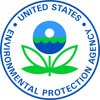EPA Selects Curators of the University of Missouri to Receive Over $850K Pollution Prevention Grant to Advance Environmental Justice
Missouri University of Science and Technology will undertake a multi-state project with the University of Alaska Fairbanks

LENEXA, KAN. (OCT. 12, 2023) – Today, the U.S. Environmental Protection Agency (EPA) announced the selection of the Curators of the University of Missouri to receive a total of $857,744 in Pollution Prevention (P2) Grants with funding from President Biden’s Bipartisan Infrastructure Law.
The Missouri University of Science and Technology (Missouri S&T) will work with the University of Alaska Fairbanks on a proposed project to improve human health and the environment in disadvantaged communities by reducing air pollution and mining wastes in communities affected by significant mining-intensive activities in Missouri and Alaska.
The universities will provide technical assistance to the critical minerals mining industry to prevent dust generation, enhance mining efficiency, and reduce the generation of mining waste. Technical assistance will include on‐site assistance, training materials, three workshops, and two P2 case studies.
“We are thrilled with the selection of the Curators of the University of Missouri for this grant,” said EPA Region 7 Administrator Meg McCollister. “As a state with vast areas of historically contaminated lead mining sites, Missouri is no stranger to the human health and environmental dangers associated with mining. With this grant, Missouri S&T will provide needed technical assistance to help reduce the negative impacts of mining.”
The EPA Environmental Justice in Communities Grant program will provide pollution prevention technical assistance to businesses to improve human health and the environment in disadvantaged communities. The Environmental Justice Through Safer and More Sustainable Products Grant program will assist businesses in increasing the supply, demand, and use of safer and more sustainable products, such as those certified by EPA’s Safer Choice program, or that conform to EPA’s Recommendations of Specifications, Standards and Ecolabels for Federal Purchasing.
EPA’s Pollution Prevention Grant program advances President Biden’s Justice40 Initiative, which aims to deliver 40% of the overall benefits of certain federal investments to disadvantaged communities that are marginalized by underinvestment and overburdened by pollution.
Ensuring greater availability and use of safer and more sustainable products can reduce harmful chemical exposures and their human health and the environmental impacts in disadvantaged communities and create a more sustainable and accessible marketplace. These efforts will continue to benefit businesses and communities across the nation by capturing what works and what can be adjusted in other communities. Recipients will share successful practices that are new or not widely known, as well as lessons learned so that future businesses and communities can continue to innovate.
EPA anticipates awarding the grants once all legal and administrative requirements are satisfied.
Background
The United States generates millions of tons of pollution each year and spends billions of dollars per year controlling this pollution. Once in our environment, this pollution harms human and environmental health, which disproportionally impacts underserved communities. Preventing pollution at the source, also known as P2 or source reduction, rather than managing waste after it is produced, is an important part of the solution landscape. This work advances a sustainable infrastructure that supports local economies while better protecting public health and the environment.
P2 practices can reduce exposure to toxic chemicals, conserve natural resources, and reduce cleanup and financial costs for businesses, particularly for waste management and environmental liability. Practicing P2 is essential for protecting public health and improving environmental conditions in and around disadvantaged communities that have long been overburdened by pollution.
Between 2011 and 2021, EPA’s Pollution Prevention program has issued nearly 500 grants totaling more than $50 million, which have helped businesses identify, develop, and adopt P2 approaches. These approaches have resulted in eliminating 19.8 million metric tons of greenhouse gases, saving 49 billion gallons of water, reducing 917 million pounds of hazardous materials and pollutants, and saving over $2.2 billion for business.
President Biden’s Bipartisan Infrastructure Law is boosting these efforts by providing a historic $100 million to support the program’s continued efforts. Thanks to the Bipartisan Infrastructure Law, state and tribal programs that are awarded grants will not be required to provide matching funds, which has helped expand access to these resources and broadened the applicant pool.
Read more about P2 and the P2 Grant Program.
# # #
Learn more about EPA Region 7
View all Region 7 news releases
Connect with EPA Region 7 on Facebook
Follow us on Twitter: @EPARegion7
